Last Casts: Beaver Lake
Long A lessons, opposing fishing styles, and Shaky Head remains king of Beaver Lake lures
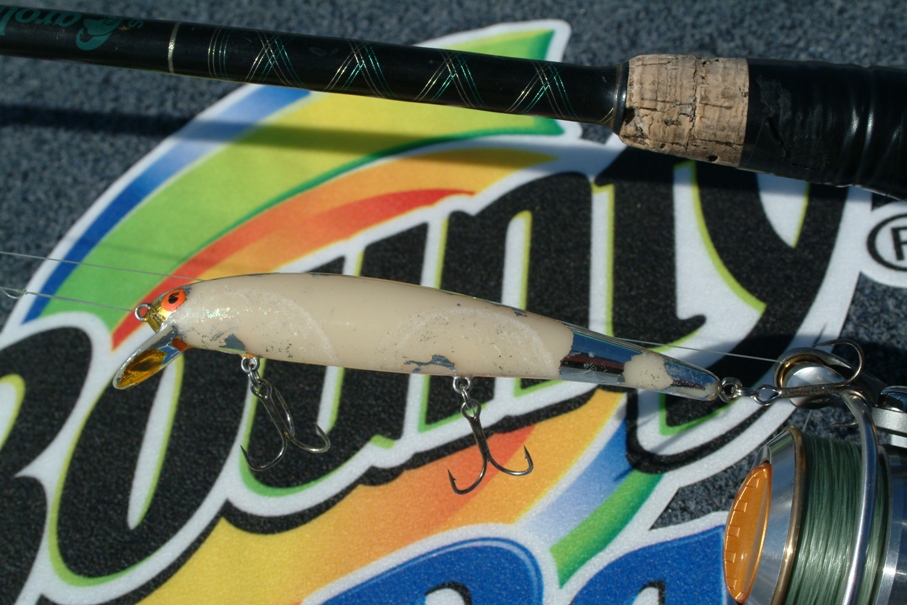
It’s been a busy year in the FLW Outdoors bass circuits in terms of new lures and techniques. The Stren Series on Okeechobee exposed the Chatterbait, the FLW Series on Lake Lanier shed some light on the Swarming Hornet Fish Head Spin, and during the Wal-Mart Open on Beaver Lake last week, “wake baits” began to make some waves.
Wake up
Wake baits are essentially floating jerkbaits reeled very slowly on the surface to create a wake. Several pros tapped into this technique last week, including Craig Powers of Rockwood, Tenn., who has been nominated by his peers as the undisputed king of wake-baiting on the FLW Tour.
Powers finished third in the Wal-Mart Open by waking a Bomber Long A (15A) along Beaver Lake’s surface to bring curious spotted and largemouth bass up for an investigatory chomp.
“I learned the technique about 20 years ago,” Powers said. “It’s basically a topwater technique, but instead of using a walker or popper, I use a Long A and reel it as slow as possible so it bulges the surface and creates a wake. At certain times it will outfish other topwaters 10-to-1, and last week at Beaver was one of those times.”
Other pros employing the technique successfully at the Wal-Mart Open included Koby Kreiger (8th), Shad Schenck (12th) and Wesley Strader (22nd). In fact, Strader used the exact same technique to finish fourth at the Lake Lanier FLW Series event in March.
Strader is quick to credit Powers with his Long A waking knowledge.
“C.P. knows clearwater topwater fishing like nobody else,” Strader said. “He grew up on a lake just like Beaver: deep and clear with vertical bluffs. He has studied clearwater schooling fish all his life, and he is a master at making them bite. Several years ago he took me out and showed me how to wake baits. It’s very specific in terms of when and where it will work. But when it works, it’s like being on a completely different lake than everyone else.”
Powers uses a standard floating Bomber Long A for the unique technique. He throws it on a 7-foot medium-light spinning rod spooled with 10-pound-test monofilament, noting that the density of fluorocarbon is too heavy, which hinders the action of the bait.
In terms of color, Powers prefers a plain white or bone-colored Long A. He’ll even take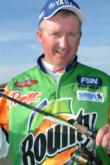 stock factory colors and scrape the paint off them to reveal more white.
stock factory colors and scrape the paint off them to reveal more white.
“Occasionally I’ll paint a little green or chartreuse on the back of the plain white ones to add a little color,” he said, showing off his “Bounty Green” Long A he painted to match his new sponsor team colors.
While Powers doesn’t mind sharing the specific lure he uses for the technique, he’s more guarded about other details such as the right time and place for waking.
“It’s taken me about 15 years to really understand the exact conditions that must come together to create the premium window for wake baits,” he offered. “Those windows are very small and fragile, because so many conditions have to come together to make it right, and rarely do all those conditions stay pinned together for that long before something changes. But when it gets right, the number of fish you can catch on it is stupid.
“This week has been an example of both sides of the Long A coin. It was awesome for two days, but the wind put a hurting on the bite in the finals.”
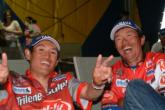 Fellow countrymen, different fishermen
Fellow countrymen, different fishermen
Well-known anglers Shinichi Fukae and Takahiro Omori both used to call Japan home, and they both made the top-10 cut at the Wal-Mart Open. So what ancient Japanese bass-fishing secret were they sharing? None. Even though the anglers share nationality in their past and now state residency – both are currently Texans – their fishing styles differ drastically.
Omori is a dedicated power fisherman who rarely picks up a rod spooled with less than 15-pound-test line.
Similar to the way Rick Clunn won the Wal-Mart Open in 2000, Omori spent last week far up the White River and War Eagle Creek pummeling shallow, stained water with a large square-lipped Bagley Balsa B for largemouths.
Meanwhile, Fukae used a spinning outfit to thread a teeny 3/32-ounce jighead through standing timber in ultraclear water on 8-pound-test. His plastic morsels included a 5-inch Cut-Tail worm and a 4-inch shad-shaped worm, both made by Yamamoto Custom Baits.
When asked about the differences in their fishing styles, Omori noted that he moved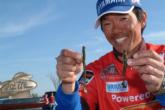 to the United States in 1990 when tournament bass fishing was dominated by power fishing pioneers like Denny Brauer, Tommy Biffle, Larry Nixon and Rick Clunn.
to the United States in 1990 when tournament bass fishing was dominated by power fishing pioneers like Denny Brauer, Tommy Biffle, Larry Nixon and Rick Clunn.
“My fishing skills matured here in the U.S. during the 1990s, where power fishing is dominant,” Omori said. “Shin’s fishing skills matured in Japan, where finesse fishing is dominant.”
When the week came to an end, Fukae’s finesse techniques took top honors, while Omori’s power techniques left him at the end of the line in the top 10.
“My fish didn’t replenish like his did,” Omori said of their different patterns. “I had to keep fishing new water each day to catch new fish, and I eventually ran out of water.”
Shad bite vs. crawfish bite
Every year FLW Outdoors holds the Wal-Mart Open in the month of April. Some years the event is dominated by sight-fishing, but on the years that it’s held before the spawn, there is a guessing game among the pros as to whether the fish will be more on a crawfish bite or a shad bite.
As the Wal-Mart Open’s history demonstrates, some years the Storm Wiggle Wart and jig bite (crawfish imitators) are more dominant in the prespawn, and some years topwaters, jerkbaits, flukes and spinnerbaits (shad imitators) are more dominant. So is there any way to tell which is the better bet on any given year?
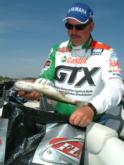 According to Darrel Robertson, who finished fifth in this year’s Open by slowly working a Zoom Fluke over deep points, it’s all about water temperature.”
According to Darrel Robertson, who finished fifth in this year’s Open by slowly working a Zoom Fluke over deep points, it’s all about water temperature.”
“If we’re here when the lake first warms up to that 50-degree mark and the fish are coming to the bank for the first time, that seems to be when that Wiggle Wart bite is red hot,” said Robertson, who now has three Wal-Mart Open top-10s to his credit. “If we’re here after that initial warm-up but before the spawn, like this week when water temperatures ranged from 57 to 60 degrees, that seems to be when the shad bite is best.”
But this critical prespawn knowledge may all be for naught next year, as FLW Outdoors’ Charlie Evans hinted onstage that next year’s Wal-Mart Open would be held in May, which would place the event more on the postspawn side of things.
Beaver Lake’s top five lures
No matter what time of year the Wal-Mart Open is held on Beaver Lake, small Shaky Head worms or jighead worms are always a major factor. Once again, the infamous Shaky Head worm took top honors as the No. 1 lure to have tied on at Beaver Lake last week.
Other top producers included the Long A, suspending jerkbaits, flukes, spinnerbaits and Wiggle Warts.
Points watch
With event No. 4 now in the books, the 2006 Wal-Mart FLW Tour has just two events left in the season.
Taking the Land O’Lakes Angler of the Year lead is Darrel Robertson with 715 points. Twenty-one points behind him is Anthony Gagliardi with 694 points. Then it’s a 31-point drop back to Ray Scheide, who is in third.
Those making strong moves into the top-48 Championship field at the Wal-Mart Open included Mark Rose, from 69th to 24th; Mark Hardin, from 80th to 43rd; and Pat Fisher, from 60th to 46th.
Those taking hard falls at Beaver Lake included Ish Monroe, from third to 39th; Dan Morehead, from sixth to 38th; and David Fritts, from 27th to 60th.
A few notables who will have to battle back into the Championship field going into the last two events include Clark Wendlandt (71st), George Cochran (74th), Luke Clausen (77th) and David Dudley (91st).